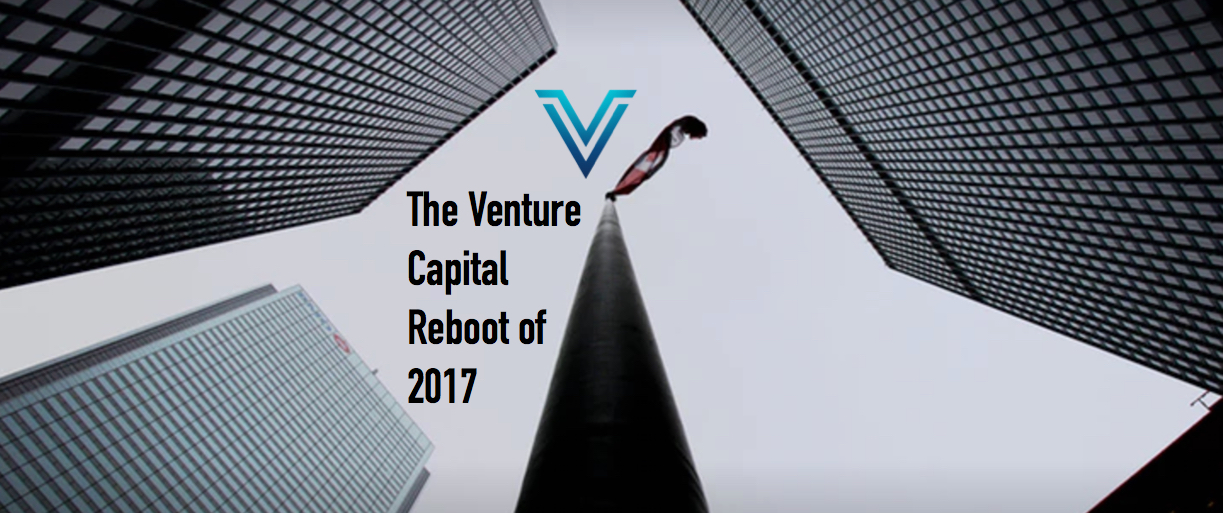Investing in innovation–that’s what venture capital does. The whole industry is designed to source, find resources for, and release innovation, all in the interests of packaging a profit for customers like endowments, retirement plans and family offices Based on 2016 and other financial trends rooted in the last decade, 2017 promises a bit of a venture capital reboot, and here’s why.
1. From the few public markets to the many private markets.
Last year, for the first time in at least a decade, the median corporate acquisition ($90 million) was a lot higher than the median venture-backed IPO ($70.5 million). If you participated in one of the $46 billion in venture backed exits last year, 82% of the time, it was because a corporation acquired you.
The rest — buyouts and IPOs — are the small print of the exit story. There were only 39 IPOs in 2016–half the number of 2015.
2. From national toward local, niche strategies for maximum value.
Venture capitalists had their best fundraising year in a decade, pulling in a new almost $42 billion for 253 funds even while experiencing six straight quarters of venture capital downturn. Over a quarter of the capital raised was for super funds: venture capital funds hovering around a billion dollars. Super funds like to write eight and nine figure checks–they can’t usually look at early stage opportunities.
While it has its strengths, the follow-on finance playbook weakness is that it undervalues innovators. The overall effect for investors and entrepreneurs is a concentration of capital rather than a diffusion into the increasingly diverse, increasingly broad innovation ecosystem. In fact, less than 10% — only 22 — of those were new funds from first time managers. There were only 2,300 first rounds last year. In bar chart form, it looks like first-time financing fell off a cliff back to around 2010 levels.
With 60% of venture capital already concentrated in a few square miles around San Francisco and Boston, these factors combine to make funding early innovation outside of Silicon Valley more of an opportunity than ever.
- With coastal venture capital pricing itself outside of the innovator’s market, the young and emerging funds that are coming online with niche strategies like ours earn an even bigger mandate and opportunity.
3. New settings on incremental versus net new innovation.
VCs invested $69.1 billion last year, among the highest levels in the last decade and 11.2 times greater than the pace of venture-backed exits.
- 70% of the deals were follow on rounds, where VCs put more money in existing companies.
With the kinds of super funds the biggest venture capital firms are raising, perhaps more late stage VC capital will be deployed in acquisitions around platform startups–borrowing a page from the classic private equity playbook and bringing it down market. Startup founders who focus on operations and put a premium on cashflow should be in a good position.
- If the startup pendulum swings between “go big” and “go home,” the successful startup today is clocking “go steady.” This may frustrate institutions and other investors in venture capital who are seeking the return profile of early stage innovation–so their own check sizes may have to come down to get it.
Rebooting venture capital for stakeholders
1. Startups: Raising round one is, by the numbers, far harder than ever. As an entrepreneur, you won’t care about that, but smart strategy is to build customer validation and then make real good friends with early stage funds. These are becoming, now more than ever, the most likely candidates to invest in a first round. Here’s what Valor is looking for in 2017 investments. If you’re not quite ready for an investor, you might consider our pitch practice series, Startup Runway.
2. Institutional investors: Venture capital trends are shifting. Know your funds’ newer strategies, especially if you’ve been investing with the firm for a while. With check sizes going up, what you plan to allocate to venture may begin to have the return profile of a different strategy. You might want to check out Valor’s investor events to compare notes with peers and other investors.
3. Angels are heroes on the frontline of innovation in the United States. Yet angel deal volume dropped 25% last year. For angels and private investors, with the check size and the valuation going up for angel and seed investments and activity down, now’s a smart time to focus on honest collaboration with the early stage or seed stage funds in your vicinity. Combining forces with professional seed and early stage funds can provide a meaningful opportunity for financially motivated angel investors and investing groups struggling with higher valuations and bigger rounds. We’re excited about working with angel investors committed to early innovation–please reach out.
What’s VC 3.0 mean for you?
The pace of innovation and the optimism behind “what’s next” are ultimately what’s driving record levels of investing, record VC fundraising, and stronger exits–like that 30% bump in the median exit size we had last year. The fact that private markets are outpaying public markets is another buy signal on the face value of innovation.
The venture capital industry was launched with the passage the Small Business Investment Act of 1958. It’s not that old. Think about how many new types of lawyers and doctors there have been in the last 50 years, and you start to see my point. We’re at the cusp of a time when VC is building out several playbooks to drive value instead of the basic, no-frills innovator-to-IPO one most are accustomed too. Creating more clear tiers of venture capital as the industry professionalizes is a function of the success and growth of venture capital as a professional service. This should ultimately mean more opportunity and more room up and down the innovation superhighway for all stakeholders. But that doesn’t mean it’s a smooth ride.
NOTE: Figures were drawn from the new 2016 Pitchbook-NVCA Venture Monitor.

